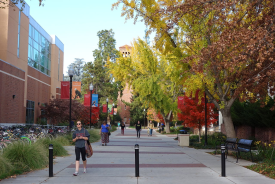Boston University Scientists Create Lung Cells From Induced Pluripotent Stem Cells [VIDEO]
ByScientists at Boston University's Center for Regenerative Medicine (CReM) published two new findings on the study of how lungs normally form. Human lungs start as clumps of undifferentiated stem cells and, after a few months, the cells organize themselves.
First, the researchers detailed the ability to grow and purify the earliest lung progenitors that come out from human stem cells. Afterwards, they announced the ability to differentiate the cells into tiny "broncospheres" that model cystic fibrosis.
The two studies were published separately in the "Journal of Clinical Investigation" and "Cell Stem Cell." The scientists hoped that these findings will lead to new "personalized medicine" methods to treating lung disease.
In a post on Boston University's official website, Darrell Kotton, director of CReM and co-senior author of both papers, said that sorting the cells to purity is difficult but important. This is because it is the first step in attempting to predict how an individual may respond to existing treatments or new drugs.
He added that there are a lot of lung diseases for which there are no treatments aside from conducting a lung transplant. This is another reason why it is important to create new tools for understanding these types of diseases.
The scientists worked with induced pluripotent stem cells (iPSCs). These cells were discovered by Shinya Yamanaka back in 2006.
The process involves taking an adult cell in the human body, whether blood cell or skin cell, and reprogramming it into a stem cell with the ability to grow into any kind of organ. Over the years, several scientists have grown lung cells from human iPSCs but they are not perfect since they are grown amidst a combination of liver cells, intestinal cells and other tissues.
The researchers were able to identify the lung cells this time by looking at the Nkx2-1 gene. They built a reporter gene that glows green when the stem cells express that particular gene. Afterwards, they separated the glowing cells and grew them in a matrix, resulting to pure, early lung cells.
© 2025 University Herald, All rights reserved. Do not reproduce without permission.








